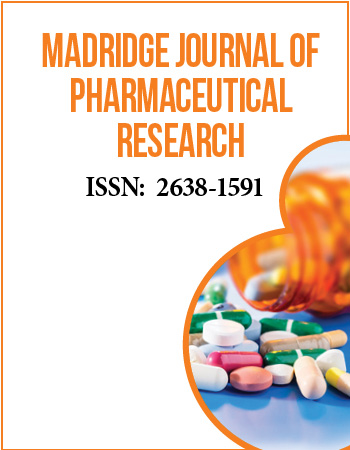International Conference on Medicinal and Pharmaceutical Chemistry
December 5-7, 2016 | Dubai, UAE
Bisphenol an analogues bind to ras proteins and compete with guanine nucleotide exchange
Ruhr University of Bochum, Faculty of Chemistry and Biochemistry, Germany
Bisphenols (BPs) are abundant in modern life, since they are widely used in numerous plastic products as plasticising agents. Humans are mainly exposed through canned foods to bisphenols, leading to the occurrence of BPs in human blood serum, urine, and sweat. Chemically, this family of compounds is characterised by an optionally substituted central sp3 carbon atom that is flanked by two hydroxyphenylfunctionalities. The protein K-Ras belongs to the family of small GTPases, which are enzymes that hydrolyse guanosine triphosphate (GTP) to guanosine diphosphate (GDP). Through switching between an active (GTP-loaded) and an inactive (GDP-loaded) state K-Ras acts as a molecular switch within cells. Furthermore, K-Ras is a known protein oncogene, because it is found to carry mutations in approx. 20 % of human cancers. Both, the activation states of K-Ras and the binding of small molecules to this GTPase can be investigated by nuclear magnetic resonance (NMR) spectroscopy. In addition, 1H-15N two-dimensional NMR spectra not only provide an opportunity to map the binding site of a ligand but also allow for the determination of the dissociation constant of a complex, a valuable parameter that helps to evaluate the impact of a ligand on a protein. In this work we show, based on our previous studies, that not only BPA but also analogues bind to K-Ras and we also discuss potential consequences of these interactions.
Biography:
Raphael Stoll is Professor of Biomolecular Spectroscopy in the Faculty of Chemistry and Biochemistry at the Ruhr University of Bochum, Germany. He studied Physiological Chemistry and Biochemistry at the Universities of Tübingen, Germany, and Oxford, UK, as a fellow of the „Studienstiftung” and DAAD. Supported by a fellowship from the FCI, he carried out his doctoral research at the Max Planck Institute for Biochemistry in Munich and received his PhD from the Technical University of Munich. After a stay as a research associate at The Scripps Research Institute, CA, USA funded by first a DAAD- and then an Emmy-Noether fellowship, he initially joined the Ruhr-University of Bochum as Junior professor. His research focuses in the main on structure-function-relationships of medically-relevant proteins, specifically those involved in the development of cancerous tumours, in order to better understand the causes of the condition and propose more effective treatment strategies.


